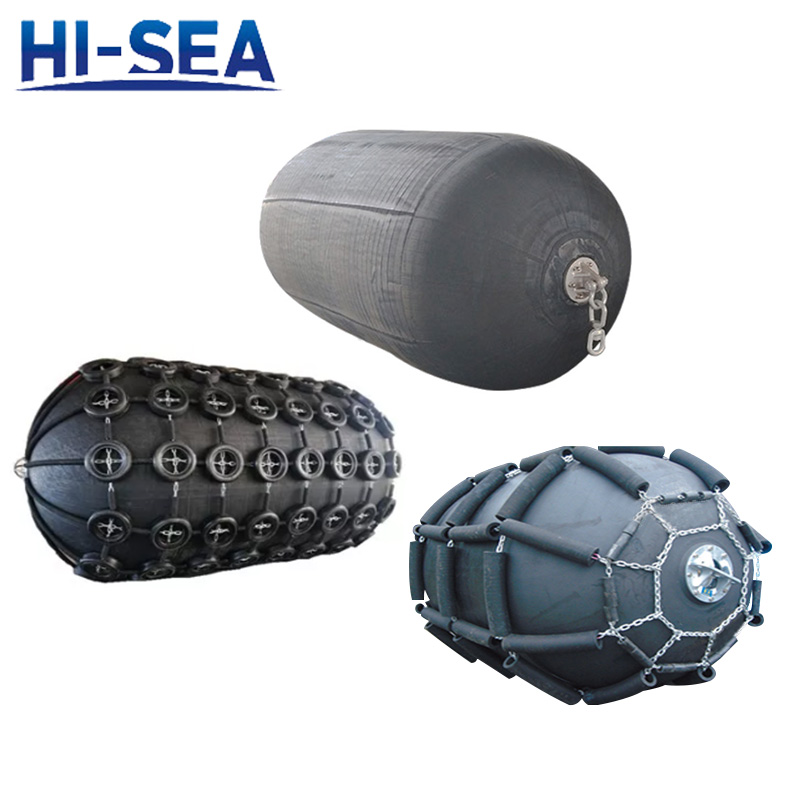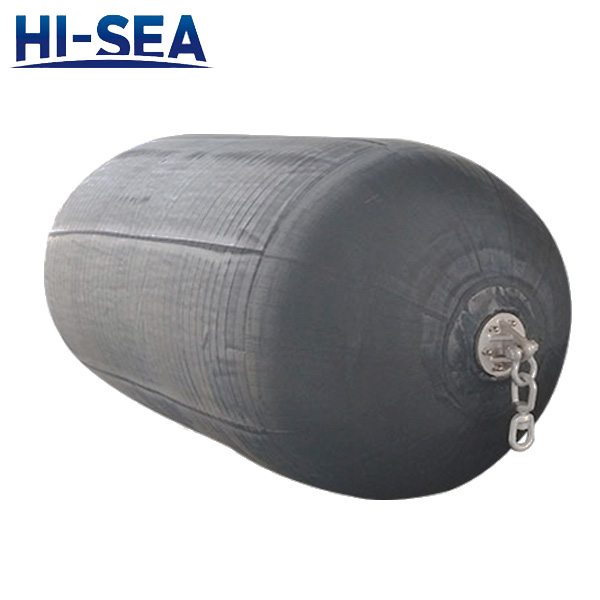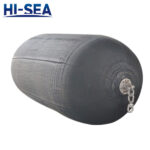Yokohama Fender Drawing and Dimensions:
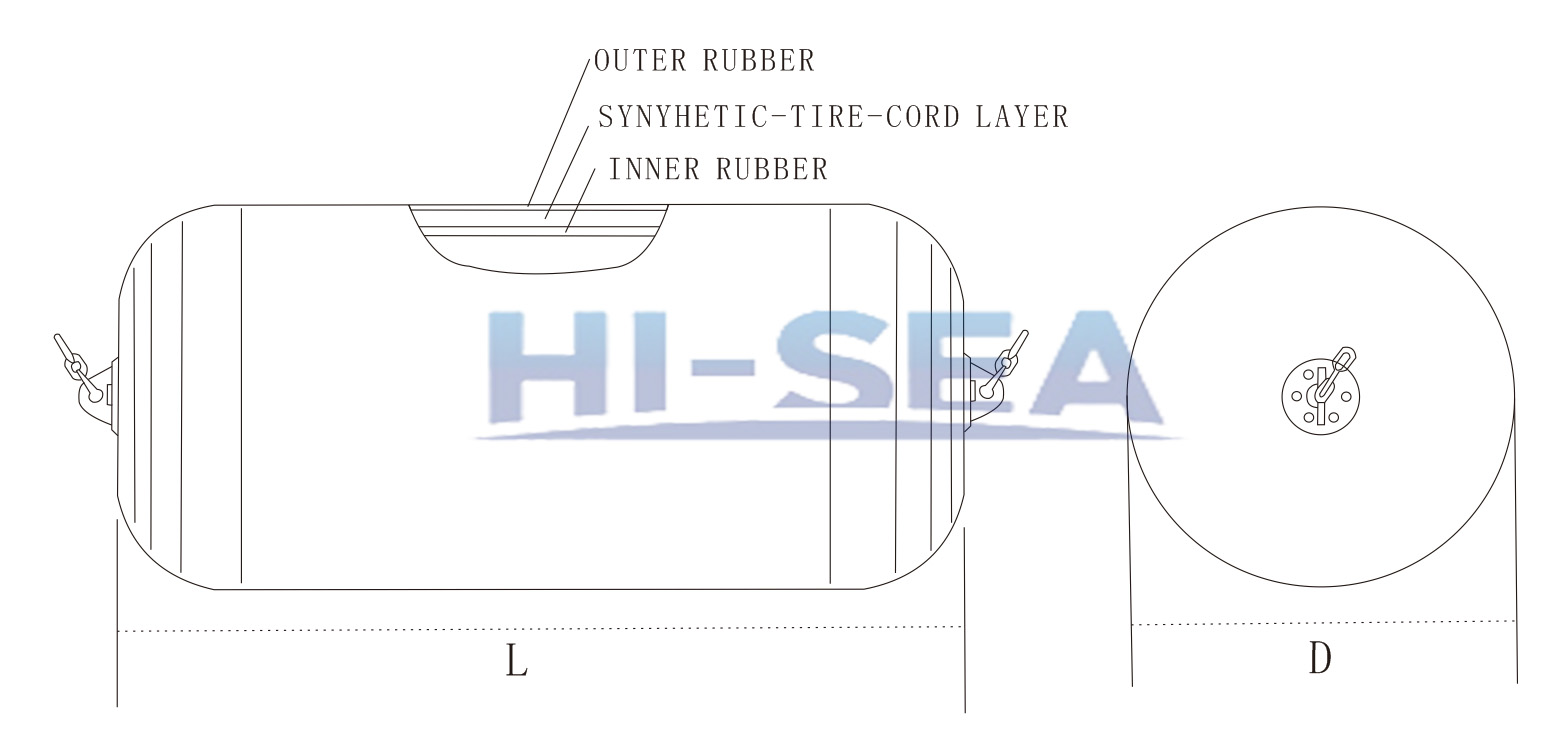
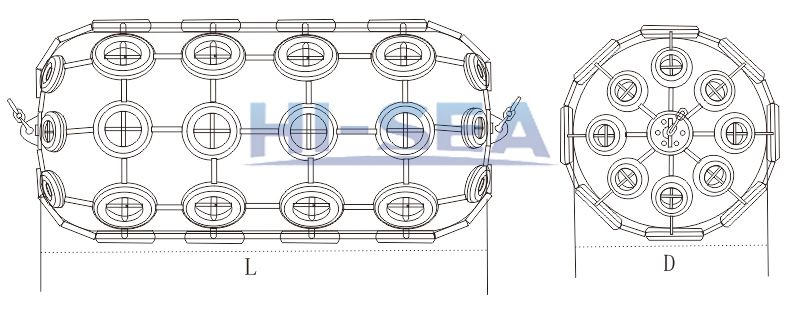
| Fender size
D×L
(Mm) |
Initial pressure 0.5kg/cm2 |
Initial pressure 0.8kg/cm2 |
weight |
| Guaranteed energy absorption (GEA)
[kNm] |
Reaction force at GEA deflection
[kN] |
Hull pressure at GEA deflection
[kN/m2] |
Guaranteed energy absorption (GEA)
[kNm] |
Reaction force at GEA deflection
[kN] |
Hull pressure at GEA deflection
[kN/m2] |
Fender body
[kg] |
Kette & tire net
[kg] |
Total
[kg] |
| 500×1000 |
6 |
64 |
132 |
8 |
85 |
174 |
25 |
55 |
80 |
| 600×1000 |
8 |
74 |
126 |
11 |
98 |
166 |
30 |
65 |
95 |
| 700×1500 |
17 |
137 |
135 |
24 |
180 |
177 |
45 |
100 |
145 |
| 1000×1500 |
32 |
182 |
122 |
45 |
239 |
160 |
60 |
110 |
170 |
| 1000×2000 |
45 |
257 |
132 |
63 |
338 |
174 |
75 |
150 |
225 |
| 1200×2000 |
63 |
297 |
126 |
88 |
390 |
166 |
110 |
180 |
290 |
| 1350×2500 |
102 |
427 |
130 |
142 |
561 |
170 |
170 |
210 |
380 |
| 1500×3000 |
153 |
579 |
132 |
214 |
761 |
174 |
220 |
400 |
620 |
| 1700×3000 |
191 |
639 |
128 |
267 |
840 |
168 |
250 |
520 |
770 |
| 2000×3500 |
308 |
875 |
128 |
430 |
1150 |
168 |
360 |
670 |
1030 |
| 2500×4000 |
663 |
1381 |
137 |
925 |
1815 |
180 |
650 |
830 |
1480 |
| 2500×5500 |
943 |
2019 |
148 |
1317 |
2653 |
195 |
860 |
1050 |
1910 |
| 3300×4500 |
1175 |
1884 |
130 |
1640 |
2476 |
171 |
1100 |
1600 |
2700 |
| 3300×6500 |
1814 |
3015 |
146 |
2532 |
3961 |
191 |
1660 |
2300 |
3960 |
| 3300×10600 |
3067 |
5257 |
158 |
4281 |
6907 |
208 |
3000 |
4700 |
7700 |
| 4500×9000 |
4752 |
5747 |
146 |
6633 |
7551 |
192 |
3800 |
3680 |
7480 |
| 4500×12000 |
6473 |
7984 |
154 |
9037 |
10490 |
202 |
7000 |
8570 |
15570 |
Yokohama Fender(Sling Type) in Applications:
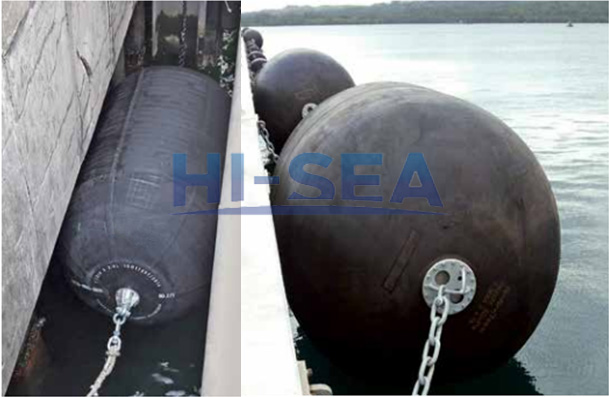
Yokohama Fenders in Factory:
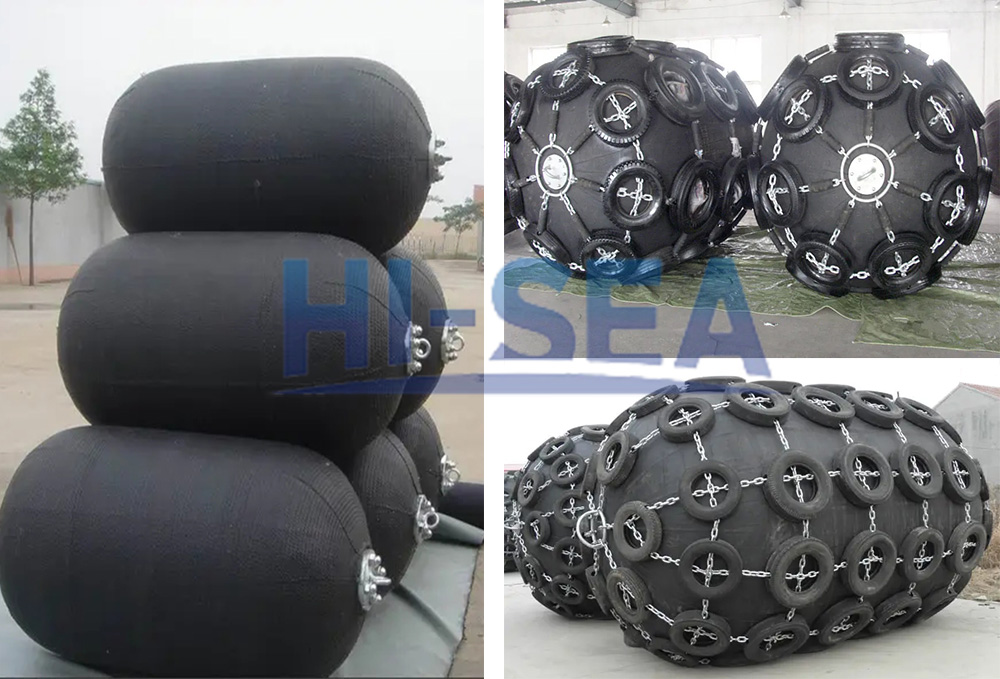
Einleitung:
Yokohama fenders, whose full name is Yokohama floating pneumatic rubber fenders, have fulfilled ISO-17357:2002, and become the model for this standard. In 2014, ISO-17357:2014 was fulfilled. Yokohama fender is also called pneumatic fender, pneumatic rubber fender, floating rubber fender.
Pneumatic rubber fenders are filled with air, and the compressed air in the bag is used to absorb the impact energy, so that the ship can be buffered when it is docked. Thus, the purpose of anti-collision has achieved.
Different from solid rubber fenders, the reaction force of Yokohama fender does not increase sharply under excess load conditions. The excess load can turn the solid rubber fenders into solid rubber block, which means they have dysfunctioned as a fender, and great damage will occur to ships and dock structures.
Another unique feature is that the performance of Yokohama fender will not decrease at inclined berthing.
The product has the characteristics of high strength, high wear resistance, large energy absorption and small reaction force. It has been widely used in oil tankers, container ships, yachts, offshore platforms, large docks, military port terminals, large bridge piers, etc., to absorb kinetic energy from ships approaching docks, pier walls or other ships. Pneumatic fenders are applicable for almost all types of ships.





